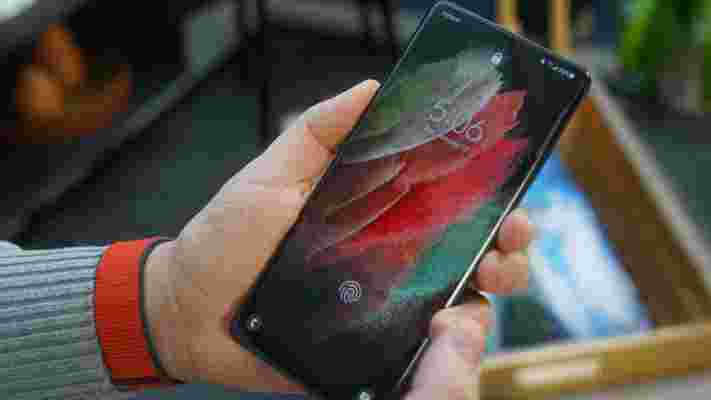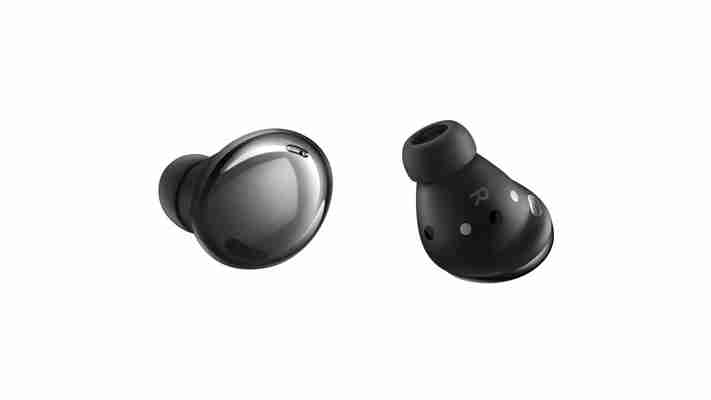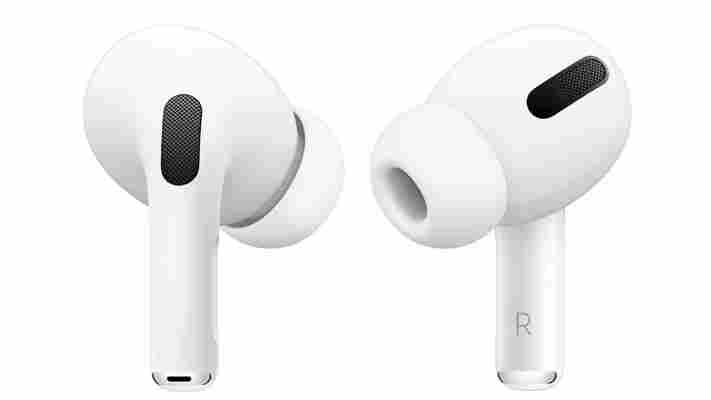Leaks suggest that – with the possible exception of the Samsung Galaxy S22 Ultra – the Samsung Galaxy S22 range won’t be drastically different to the Galaxy S21 range, so we’d assumed pricing would be similar. But the latest leak points to higher pricing for every model.
This is according to @chunvn8888 (a leaker who doesn’t have as much of a track record as some, so we’d take this with an extra helping of salt).
They claim that the Samsung Galaxy S22 will start at $899 (around £660 / AU$1,245), the Galaxy S22 Plus will start at $1,099 (roughly £805 / AU$1,525), and the Samsung Galaxy S22 Ultra will start at $1,299 (approximately £955 / AU$1,800).
In every case that’s $100 more than the equivalent model in the Samsung Galaxy S21 range cost, so it’s quite a jump in price.
Of course, beyond the fact that this leaker could be wrong, there’s the usual caveat that price conversions for other regions won’t be totally accurate, but it suggests there will be a jump in price everywhere.
And so far the only other real price leak (which only listed them in euros) also suggests these phones will be more expensive. So sadly that’s looking likely.

Analysis: making sense of the higher prices
Assuming these prices are accurate, it’s worth considering whether Samsung can justify them, and to some extent it perhaps can.
Going by leaks and rumors, the Samsung Galaxy S22 Ultra is a very different beast to its predecessor, complete with an included S Pen and a slot to house it. This could feasibly add to the price.
For the standard Samsung Galaxy S22 and the Galaxy S22 Plus the higher price looks harder to justify, but we have heard that Samsung might switch back from plastic to glass for the rear of the Galaxy S22, which is likely to add at least a little to the cost.
The increase would also make the $699 / £699 / AU$999 Samsung Galaxy S21 FE feel more affordable in comparison.
That still leaves the Samsung Galaxy S22 Plus, which is sure to have the standard upgrades like a new chipset and probably an improved camera, but which no leaks point to price-wise worthy change in.
That said, Samsung’s main competitor here is the iPhone – including the upcoming iPhone 14 range, and a recent leak suggests that this could be getting a price rise too, at least for the Pro models.
That would bring the iPhone 14 Pro in line with the Samsung Galaxy S22 Plus if both leaks are right, and that doesn’t seem an unreasonable position for the two phones. But it's bad news for buyers all round.
Via Phone Arena
Samsung Galaxy Buds Pro vs Apple AirPods Pro: the noise-cancelling earbuds compared
The Samsung Galaxy Buds Pro arrived in January 2021, following months of leaks and rumors – and with active noise cancellation and 3D audio support, they’re a serious rival for the Apple AirPods Pro .
In many ways, the Galaxy Buds Pro are AirPods Pro alternatives for Samsung users, with the Apple’s buds being heavily biased towards iOS devices – indeed, many of their best features are only available when the AirPods Pro are paired with other Apple devices, and it’s the same story with Samsung’s earbuds and its own range of Galaxy smartphones .
The Samsung Galaxy Buds Pro follow in the footsteps of the Galaxy Buds Plus and Galaxy Buds Live . However, these wireless earbuds were certainly not Samsung’s best, with the Galaxy Buds Pro representing a significant step up in terms of the specs.
Samsung’s strategy so far has been to release true wireless earbuds on a rather rapid schedule; the Galaxy Buds Pro were launched just six months after the Galaxy Buds Live. Since then, we've also had the Samsung Galaxy Buds 2 , which feature a number of improvements over the Buds Pro, including overall better sound and slightly improved active noise cancellation, too. They're also a good deal cheaper than the Galaxy Buds Pro, which does make the Galaxy Buds 2 Samsung's best pair of earbuds yet.
That’s in stark contrast to Apple, which takes its sweet time with its audio releases. Has the extra time spent developing the AirPods Pro made them a superior pair of true wireless earbuds compared to the Galaxy Buds Pro?
Deciding between the Samsung Galaxy Buds Pro and the Apple AirPods Pro can be tricky, especially as they share similar specs. Having tested both models extensively, we’ve put together this handy guide to what you can expect from the Galaxy Buds Pro and the AirPods Pro, with a deep dive into their best (and their worst) features.

Following multiple leaks, the Galaxy Buds Pro were announced on January 14, 2021 alongside the Samsung Galaxy S21 during the company’s Unpacked 2021 event.
A huge step up from the Samsung Galaxy Buds Live, the new Samsung Galaxy Buds Pro offer better sound and microphone quality with multipoint pairing and spatial audio support.
They don’t offer the same level of noise cancellation as over-ear headphones or the sound quality of high-end earbuds, but for their price they offer just enough of both to be competitive.
Competitive price
The Galaxy Buds Pro will set you back $199 / £219 / AU$349. That may sound pricey, but they’re cheaper than the Apple AirPods Pro, which cost $249 / £249 / AU$399 when they launched in 2019 – and while discounts are sometimes available, they’re rare.
Samsung’s Pro earbuds are a little more expensive than their predecessors, which makes sense when you consider the step up in specs. Saying that, if you’re looking for cheaper alternatives, you don’t have to look far: the Sony WF-SP800N and Jabra Elite 75t both offer active noise cancellation for lower prices, as long as you don’t mind skipping out on the Samsung-specific features.
Water-resistance
Up to this point, Samsung’s earbuds have only been IPX2 or IPX4 water-resistant. That meant that they were good for a few drops of rain or a bit of sweat, but they weren’t the kind of things you’d want to have around you during intense workouts.
With IPX7 certification, the Samsung Galaxy Buds Pro are protected against fresh water immersion for 30 minutes at a depth of up to one meter (though we wouldn’t recommend using them for swimming), which is a big improvement for Samsung, and rivals the highest standards of other earbuds.
Meanwhile, the AirPods Pro offer a rating of IPX4 – not bad by any means, but Samsung is the clear winner in this department.
Great Galaxy integration
The Galaxy Buds Pro come with lots of features that are tailored to the Samsung crowd, including multipoint pairing, hands-free Bixby support (but not Google Assistant) and the Samsung Galaxy Wearable app that’s only available on Android that you’ll need to use to unlock the Buds’ best features. They can also use Samsung’s proprietary Scalable Audio that supports UHQ audio streaming over Bluetooth at up to 24-bit / 96kHz, SmartThings Finder and multi-mic recording that allows you to use the Buds as a lapel mic stand-in when you shoot videos on your Samsung phone.
360 Audio
The Galaxy Buds Pro come with 360 Audio support, which Samsung says brings “theater-like, multichannel sound” to the buds, with the ability to upscale any audio source - no need to seek out tracks mixed in 5.1 or above.
Any downsides?
While noise cancellation is perhaps the biggest calling card of the Samsung Galaxy Buds Pro, we found that this feature was lacking compared to other ANC-enabled wireless earbuds. Saying that, the ANC is far better than what their predecessors could manage, and we found the Galaxy Buds Pro were able to drastically reduce the sounds of loud air purifiers and humidifiers. However, they didn’t stand a chance when someone else in the house was playing music.
The audio quality also leaves something to be desired, with a flat presentation and small soundstage – though we did find that they sounded balanced across the bass, mids, and trebles.
We also weren’t enamored by the fit of the earbuds, which we found to be bulky and too uncomfortable to wear in bed.
Finally – and this isn’t necessarily a downside for some – is the fact that the Samsung Galaxy Buds Pro are specifically designed to work with Galaxy devices. That means, if you have an iOS or non-galaxy Android device, you won’t have access to many of the features that sets these earbuds apart from the competition.

The Apple AirPods Pro are among the most popular true wireless earbuds you can buy today, following in the footsteps of the iconic AirPods .
With a great sound, strong noise cancellation, and excellent quality of life features for iOS users, these snug-fitting earbuds even scan your ears to ensure they’re fitted correctly.
While they aren’t the best true wireless earbuds on the planet – that honor goes to the Sony WF-1000XM4 , the AirPods Pro come close, offering extras like Spatial Audio, Automatic Pairing, and the ability to track your hearing health.
Compact design
The AirPods Pro are far sleeker than their predecessors, the 2019 AirPods , with silicone eartips and built-in air vents that allow you to find a comfy and secure fit. Their lightweight build and compact accompanying charging case makes them ideal for use on the move, and we think they’re more comfortable than the Samsung Galaxy Buds Pro. However, their lower water-resistance rating means that Samsung’s buds may be more suitable for use while working out.
Hearing health tracking
The AirPods Pro – along with the AirPods and Powerbeats Pro – send exact volume levels to your iPhone, so you can make sure you’re not listening to music too loudly. According to Deafblind UK , experts recommend that you keep your listening to between 60 and 85 decibels to protect your hearing health, and with the AirPods Pro, you can do just that.
Great sound and noise cancellation
Compared to the Samsung Galaxy Buds Pro, the Apple AirPods Pro offer a higher standard of audio quality, as well as active noise cancellation. With a well balanced soundstage, smooth mids, and powerful bass frequencies, these buds perform best when it comes to pop, rock, and RnB, though they lack the sparkle to make classical music really shine.
They also come with Spatial Audio, which works in 5.1, 7.1 and Dolby Atmos, positioning sound all around you within a virtual sphere. That means that if you're watching a Dolby Atmos film that shows a plane flying overhead, it will sound as though the plane is really passing above you (well, sort of).
Easy pairing with iOS devices
One of the best things about the AirPods Pro (and the AirPods Max ) is how well they integrate into Apple’s wider ecosystem, including how quickly and seamlessly they pair with iOS devices (though they do also work with Android devices).
A new feature, called auto-switching, is testament to that: following a recent software update, the AirPods Pro can now, in Apple's words, "magically switch over between devices", detecting automatically which iOS device you are using.
As well as that, you can use the recently announced Apple HomePod mini (and older Apple HomePod ) to transmit voice messages to AirPods in your home, thanks to a new Intercom feature.
Spatial Audio The AirPods Pro got an upgrade with iOS 14, which allowed for a feature called Spatial Audio.
Spatial Audio works in 5.1, 7.1, and Dolby Atmos , which positions sound all around you within a virtual sphere – that means that if you're watching a Dolby Atmos film that shows a plane flying overheard, it will sound as though the plane is really passing above you.
As well as allowing for clever virtual Dolby Atmos, the AirPods Pro can track the motion of your head and your device, to ensure that the audio always appear to originate from the correct position.
Any downsides?
The biggest issue with the Apple AirPods Pro is their price; at $249 / £249 / AU$399 they’re more expensive than many similar models on the market (though Apple is said to be working on a cheaper version, the so-called AirPods Pro 2).
Just as the Samsung Galaxy Buds are made to work with Galaxy devices, the AirPods Pro are geared towards iOS users, and that means many of their extra features won’t work with Android smartphones and tablets.
The design is also somewhat divisive. Many people dislike the look of the protruding ear stems, even if they aren’t as egregious as the 2019 AirPods – and you won’t find the AirPods Pro in any of the cool colors you get with Samsung’s earbuds.
Takeaway
Whether you buy the Samsung Galaxy Buds Pro or the Apple AirPods Pro should really come down to what kind of smartphone or tablet you intend to use them with. If you’re buying the Samsung Galaxy S21 , staying in the family is your best bet to get the most out of your earbuds.
Likewise, the AirPods Pro work best with Apple devices, and even integrate with the company’s HomePod and HomePod mini smart speakers .
If noise cancellation and sound quality are your biggest concerns, the AirPods Pro are probably your best bet too; though the high water-resistance rating provided by the Galaxy Buds Pro means they’re likely the better choice if you want to use your earbuds for working out.
Both buds support 3D audio in some shape or form, with head-tracking ensuring the sound will always originate from the right place in relation to your ears. Saying that, the Galaxy Buds Pro's 360 Audio can be used with any audio source, while the AirPods Pro can only utilize Spatial Audio for tracks in 5.1 and above.
Of course, you may decide that neither of these models are right for you – after all, there are better-sounding true wireless earbuds out there, like the Sony WF-1000XM4 and the Cambridge Audio Melomania 1 Plus , and we think Samsung's most recent buds, the Galaxy Buds 2, are better-sounding than the Pro.
Despite their relatively high prices, neither the Galaxy Buds Pro nor the AirPods Pro excel when it comes to battery life, offering up to 27 and 25 hours respectively. That’s fine, but certainly not class-leading.
If you’re on a strict budget, it’s well worth checking out some cheaper alternatives too; the Lypertek PurePlay Z3 2.0 sound great and boast an astonishingly long battery life for a low price.
Moon Knight trailer: 6 things you may have missed
The official trailer for Marvel Studios' Moon Knight has landed online – and, thankfully, we don't have long to wait for its arrival on Disney Plus.
As we previously reported , Moon Knight will launch on Disney's streaming service on Wednesday, March 30. That's good news for all MCU fans (us included), as we had expected that the next Marvel Phase 4 project we'd get to see would be Doctor Strange 2 .
But we digress. Moon Knight's release is only two months away, but there's not a lot we actually know about the TV show. The trailer provides a few more details about its overarching plot, key characters, and Moon Knight's abilities, but much remains a mystery.
That is, unless you dig a little deeper. Below, we've covered six things you may have missed from the Moon Knight trailer, including who Ethan Hawke's villain is, what that thing is that Marc Spector sees as he enters an elevator, the creature that Moon Knight is beating up, and more.
Potential Moon Knight spoilers follow. Turn back now if you want to watch the Disney Plus show with as little information as possible.
Who is Arthur Harrow?

Let's get one of the bigger mysteries out of the way first: who is Arthur Harrow, Moon Knight's supposed antagonist being played by Ethan Hawke (Training Day, The Black Phone)?
Harrow is an obscure Marvel character who seems like a strange fit for an MCU show's primary villain. We know this because the YouTube version of the trailer supports subtitles, and turning them on reveals that this is who Hawke is playing.
In the comics, Arthur Harrow is a doctor who experimented on human subjects to try and find a way to stop people feeling pain. Sure, it sounds like a noble endeavour, but it really isn't.
Harrow only appeared briefly in one Marvel comic – 1985's Moon Knight #2 – so his inclusion seems like an odd choice. But, knowing how Marvel Studios operates, Harrow could actually be the public face of a larger, more secretive villain or antagonistic group.
Could O.M.N.I.UM, a secret organization with a hidden agenda in the Marvel comics, be the larger villain at play? Is Harrow, who is depicted as a cult leader in the Moon Knight TV series, merely a conduit for another ancient Egyptian god like Anubis? Or could Marvel combine his character with Sun King/Patient 86, an unnamed Marvel supervillain with pyrokinetic powers who suffers from bipolar disorder? Reddit users seem to think that the last of these options is the most logical, but only time will tell.
Marc Spector, meet Steven Grant

Moon Knight will star Oscar Isaac as Marc Spector, an ex-mercenary with dissociative identity disorder (DID) who is granted superhuman abilities by the Egyptian moon god Khonshu after a fatal fight with a rival.
Interestingly, though, it isn't Spector who appears to be in control at the start of the TV series. Instead, it seems that Steven Grant – one of Spector's alter-egos – is who we'll meet first. This is suggested as much when Steven/Marc's boss, who is called Donna – based on the trailer's YouTube subtitles – calls him "Stevie" when he shows up for work.
Later in the trailer, we hear a woman called Layla – is this the mystery character that May Calamawy (Ramy, Djinn) is playing? – call Isaac's character Marc, i Moon Knight's real identity. But Steven asks Layla "Why did you call me Marc?", which heavily implies that Marc isn't the persona that's currently in charge.
Marc Spector has four different personalities, including Steven, in the comics. Will we see the other three – cab driver Jake Lockley, young girl Inner Child, and the white suited Mr. Knight – as part of Moon Knight's TV show? Here's hoping.
Ancient Egyptian gods aplenty

As a comic series, Moon Knight was heavily influenced by Egyptian mythology.
Marc Spector is granted superhuman abilities to fight crime by Khonshu, Marvel's take on the Egyptian moon god Khonsu, while Moon Knight's costume is inspired by the ancient Egyptian mummification process.
At the 0:45 minute mark, we actually see Khonshu appear on screen, too. It's only for a brief moment – Khonshu apparates in front of Steven/Marc when a light flickers before striding towards the elevator that Steven/Marc is about to ride in. Some fans initially thought that it was Thoth who appears, but it is Khonshu's signature mask and crescent-shaped staff that we see.
Later, at the 1:06 mark, we see Steven/Marc recover an old phone, which has a crocodile menu screen wallpaper. This could be a nod to the ancient Egyptian god Sobek (also spelled Sebek), who is not only the god of the Nile River, but also the patron god of the military. Given that Marc Spector is a former marine, this is a nice tie-in to the character's backstory.
We also see more ancient Egyptian gods in Ra, Osiris, and Anubis at the 5:40 mark as Steven/Marc wanders through a museum. Sure, they're only statues, but it's more nods to the history that influences Moon Knight's comic runs and TV series.
An American werewolf in London?
We previously reported on this in our Moon Knight release date leak article , but it seems that Moon Knight will go toe-to-toe with a werewolf (or potentially werewolves) in the six-part Disney Plus series.
As we see at the 1:40 mark, Moon Knight can be seen repeatedly punching a wolf-like creature in a public bathroom. The identity of this creature is unclear, but could it be Jake Gomez, aka one of two Marvel characters who have starred in a comic series called Werewolf By Night?
Gael García Bernal (Coco, Old) has reportedly been cast as the lead in Marvel Studios' Werewolf By Night, an upcoming Disney Plus Halloween special that's based on the comic property. There's a possibility, then, that Moon Knight could introduce this character before his official MCU arrival in the unnamed TV special.
If it isn't a werewolf, though, Moon Knight could be fighting a jackal, which are prevalent throughout ancient Egypt's history. If Egyptian god Anubis is part of proceedings in any way, he may have an army of jackals that he sends after Steven/Marc for as-yet-unknown reasons.
Signature weapons on show
Okay, this isn't part of the trailer, but we do know that Moon Knight's signature crescent moon-shaped darts will appear in the TV show.
Marvel Studios released a brand new poster for its latest project after the trailer had dropped online, and the one sheet confirmed that the crescent darts would make an appearance in the live-action series.
Curiously, the crescent dart in the poster is adorned with someone's blood, which implies that Moon Knight may be a darker and more savage offering than we've been used to from Marvel's live-action productions.
The blood-soaked aesthetic may only be used to give the poster a more visceral feel, though, and doesn't confirm that Moon Knight will be overtly violent or even cross over into R-rated territory. Still, it's an intriguing decision on Marvel's part to release a poster such as this for any of its projects.
Rubik's Cube imagery
Finally, we couldn't not include this fun little thematic Easter egg.
At the beginning of the trailer, we see Steven/Marc playing with a Rubik's Cube. The puzzle, which users solve by lining up the same colored squares on each side of the cube, appears to be a metaphor for the shifting nature of Steven/Marc's multiple personalities.
Once one of his personas is perfectly aligned, much like a completed face of a Rubik's Cube, that personality may end up taking over. It's a smart use of imagery, if nothing else.